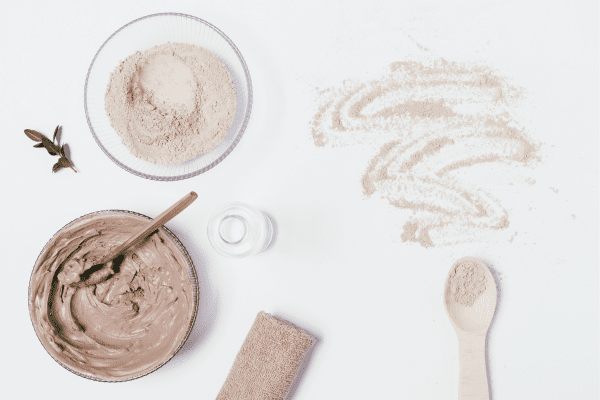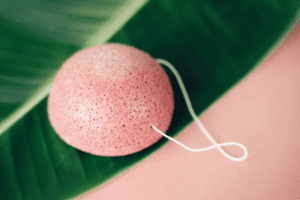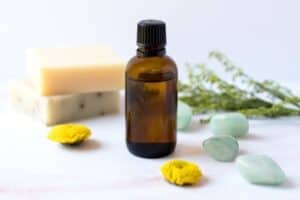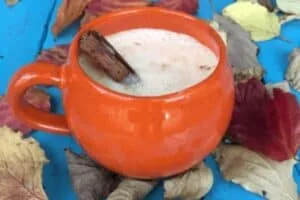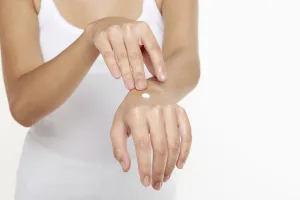11 Best Natural Bath Bomb Colorants (And Which to Avoid!)
Use these natural bath bomb colorants to make your DIY bath bombs absolutely gorgeous!
Bath bombs are all the rage right now, and rightfully so! 🛀🏼 There’s nothing better than sinking into a relaxing, luxurious bath.
With so many toxic bath bombs on the market, people are turning to DIY bath bomb recipes. But how do you find all-natural colorants for making bath bombs? The information out there can be incredibly confusing!
In this article, I’ll clear up all the confusion and show you the best clean colorants for your bath bombs. 👌🏻
This post contains affiliate links. You can learn more here.
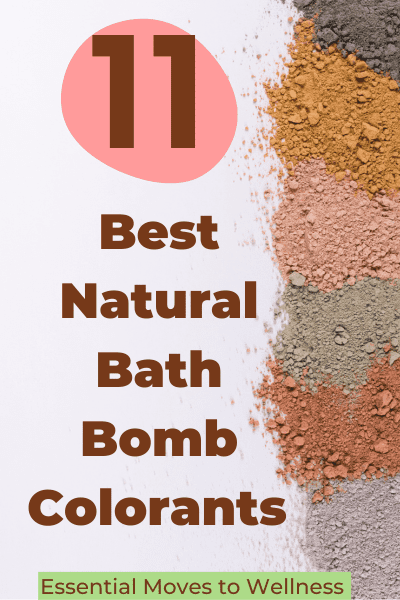
What Colorants Should You Use for Natural Bath Bombs?
Plants and clay are the best bath bomb colorants! Plant-based colorants are powders made from plant roots and other sources. They color your bombs beautifully, and are easy to mix, to create custom colors!
They do have their own unique beautiful colors. However, you won’t find bright pinks, vivid blues, and astonishing oranges in natural colorants! Plants come from the earth, 🌎 so all plant-based colorants have an earthy undertone.
These colorants are more pastel-looking, and will create bath bombs with a softer, earthier look to them. If you see brightly colored bath bombs, you can safely bet that they are made from toxic ingredients.
I personally find the softer shade of a natural bath bomb to be a more calming, relaxing bath experience anyway!
Clay is my second choice for a natural colorant, because they contain a lot of skin-loving minerals, such as magnesium, calcium, and zinc. And most of the human population is deficient in these minerals!
Plus, bath bombs made from clay leaves your skin feeling silky and soft, because clay is a natural exfoliant.
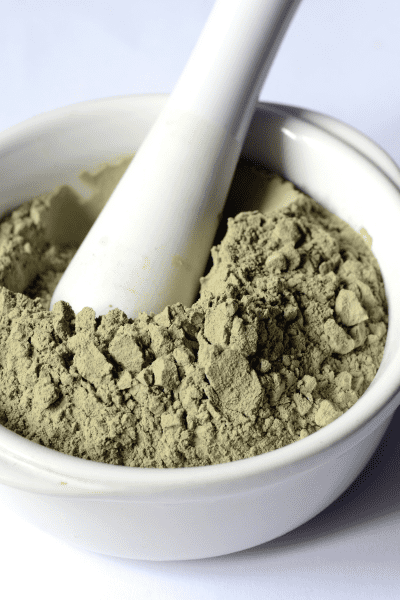
Which Colorants Should You Avoid?
You probably know that artificial dyes are bad for your health, but did you know that a lot of natural bath bomb colorants still include artificial dyes? Any bath bomb colorant that has FD&C or D&C on its label is not toxin-free.
“FD&C” and “D&C” are labels used for color additives that have been deemed safe to use by the FDA. These ingredients might show up on the label as FD&C red 4, for instance. And as the name suggests, it is an artificial color, made from synthetic materials.
Dyes such as “red #40”, “yellow #6”, and “green #3” are also potentially harmful. Other words to look for are “aluminum lake” or “lake”, as in “FD&C red 33 aluminum lake”. Sometimes the terms “FD&C” and “D&C” are left off entirely, leaving a label like “Blue 1” or “Blue 1 Lake”.
“Lakes” are pigments that are made from FD&C dyes. They are popular because they mix well with oils, fats, and sugars.
Why are these dyes a concern? Because artificial dyes are made from petroleum and aluminum.
The FDA has deemed these dyes safe for consumption and use, but research shows otherwise. One of the main concerns is hyperactivity and depression in children. Blue No. 1 is a major culprit.
Artificial dyes also cause cancer, allergies, reproductive and developmental disorders, neurological problems, kidney and renal problems, lung problems, hair loss, nausea, and headaches.
When used in cosmetics, these dyes are quickly and easily absorbed into the skin, and then into the body. Products that come into contact with lips, eyes, and mucus membranes are absorbed even faster (such as your bath bombs).
Liquid crystal dyes, lakes, pigments, and mica powders are all often used to color bath bombs. Even ‘natural’ bath bombs. But these colorants are made from FD&C and D&C dyes, meaning they are anything but natural.
It’s best to ditch the conventional dyes and go with natural colorants instead!
The Best Natural Bath Bomb Colorants
The best natural bath bomb colorants are plant-based powders and clay. And as I said before, these colorants don’t produce vibrant colors. Instead, they create more pastel, almost rustic-looking bombs.
Because of this, they make beautiful gifts! Each of these natural colorants below has its own unique hue, along with its own natural skincare benefits. Bonus!
So, give them all a test run, and see which color combinations you like the best!
Natural Red and Pink Bath Bomb Colorants
Moroccan Red Clay ♥️– If you’re looking for a natural red bath bomb colorant, this is your best bet. It provides a simple red with a slightly orange undertone. If you don’t want a fire-engine red, Moroccan Red Clay is perfect!
Moroccan Red Clay was traditionally used in Western medicine for cleansing and detoxifying the body. It contains potassium, silica, iron, magnesium, and sodium.
This clay:
- Shrinks pores
- Improves elasticity
- Stimulates circulation
- Draws out excessive oil
- Moisturizes
Moroccan Red Clay gently cleans and exfoliates.
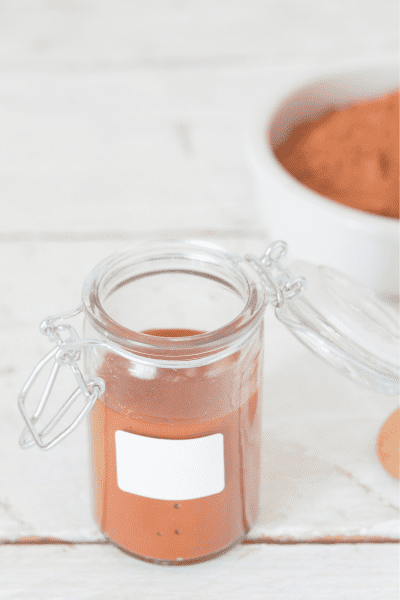
Rose Kaolin Clay 🌹– One of my favorites for a beautiful soft pink! Just use a small amount, for a pastel pink or a larger amount for a more traditional pink.
Rose Kaolin Clay also has some detoxifying qualities to it, but not as much as Moroccan Red Clay. It’s great for someone who has normal skin, and just wants to make it look a little bit better.
Be careful when using clays; don’t use too much, or you’ll have a dry, crumbly bath bomb.
Colorants for Orange Bath Bombs
Turmeric 🧡– I recommend turmeric for your orange bath bombs. It’s so easy to find! All you have to do is walk over to your kitchen pantry.
Turmeric is an anti-inflammatory spice that lightens the skin and slows down skin cell damage. It’s great for acne scars, dark circles, and dull skin. Plus, turmeric prevents premature aging!
Turmeric will give you a beautiful country orange (rather than a pure orange). Use it within six months though, because the color can fade over time. Depending on how much you used, it may streak your tub, so clean it immediately afterward.
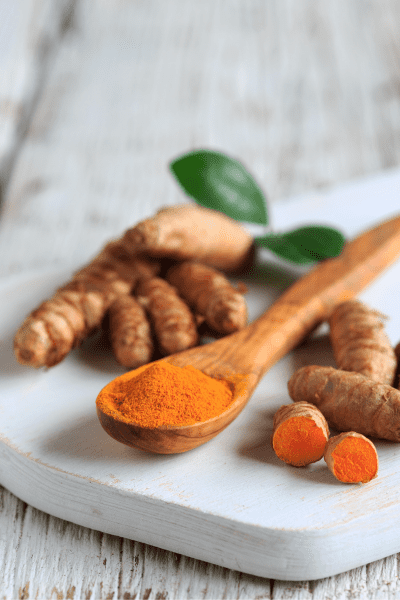
Natural Yellow Bath Bomb Colorants
Curry 💛– Your best bet for a naturally yellow bath bomb. Don’t worry – the scent will fade!
Curry makes a gorgeous shade of light yellow. Of course, you can make a more muted or deep yellow, depending on how much you use. But I like the softer shades.
Like turmeric, curry is an anti-inflammatory spice that you can find in your kitchen pantry. No extra shopping required! It provides natural relief for inflamed or dry skin.
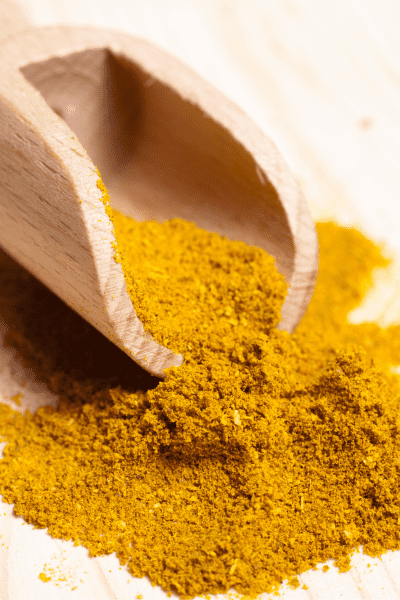
Saffron 💛– Another great spice that creates a lovely yellow color. Saffron brightens your skin, giving it a healthy glow.
Saffron is a natural remedy, used for centuries as an anti-depressant. It too is anti-inflammatory, treating acne, blemishes, and blackheads.
Colorants for Natural Green Bath Bombs
Spirulina 💚– Your best option for a lovely, dark green hue, or even a sea green. Spirulina is actually a highly nutritious algae.
It, too, is detoxifying and anti-inflammatory. It helps the body shed dead skin cells, and increases cell renewal, which gives your skin a healthy, youthful glow.
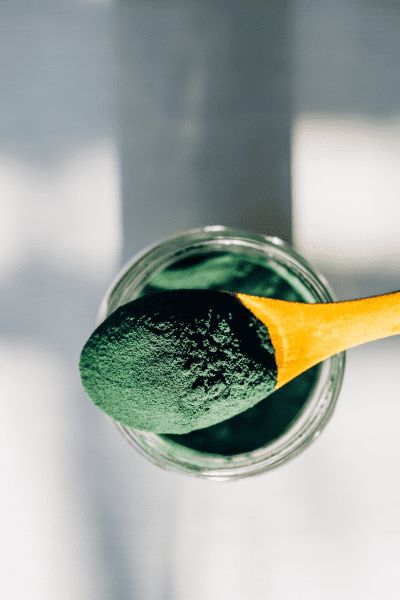
Matcha 💚– Made from green tea leaves, use it to create awesome light greens. Matcha is amazing for your skin – and it smells good, too!
It’s believed to:
- Reduce stress and inflammation
- Bring clarity of mind
- Boost metabolism and energy levels
- Detoxify
Matcha is also rich in antioxidants and has anti-aging benefits. It’s the only kind of caffeine that I can have without feeling like the world will end. 😅
Blue Bath Bomb Colorants
Blue Cornmeal 💙– Provides a beautiful true blue for your bath bombs. You can find this one in your pantry as well!
Blue cornmeal is packed with nutritional value, but it’s so good for your skin, too. It gently exfoliates. And since it contains antioxidants, zinc, iron, and folic acid, it’s great for acne and problem-skin.
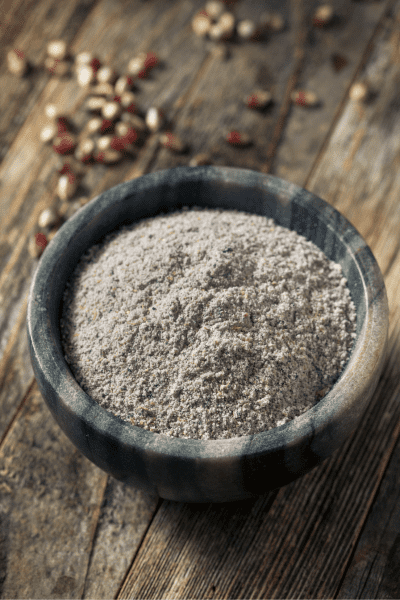
Natural Purple Color for Bath Bombs
Madder Root 💜– The only natural source that will give you a true purple. Your shade will depend on how much you use, though, so play around with it.
A small amount might give you a red. I’d say you should use more than you think to get a good purple.
Madder root comes from the roots of the Madder plant, which is a climbing vine related to the coffee plant.
Like nearly every other colorant on this list, it has anti-inflammatory properties and can be used to soothe dry skin, inflammation, allergic reactions, or a rash.
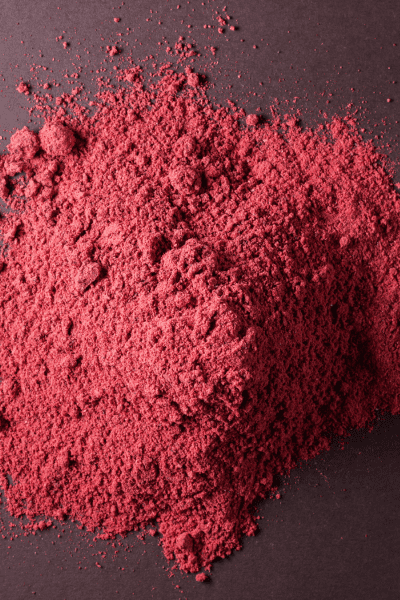
Brown, Black, and Grey Bath Bomb Colorants
Cocoa Powder 🤎– Another one you have in your pantry! Cocoa powder makes a rich, chocolatey brown, and it smells like hot chocolate. In fact, you can use it to make a hot chocolate bath bomb!
Because cocoa powder has caffeine in it, it helps to firm up skin and reduce puffiness.
Activated Charcoal 🖤– Creates gorgeous black or grey bath bombs and turns the bath water a fun black. But user beware!
Activated charcoal can be messy. It can cling to your skin, or the bathtub, because it is not water soluble.
Many people put polysorbate 80 in with it, to prevent it from staining the tub. The polysorbate 80 acts as an emulsifier, helping the activated charcoal disperse into the water better, and thus, not cling to the tub.
But polysorbates are linked to cancer, skin allergies, developmental, and reproductive concerns.
So, if you use it to help your activated charcoal be less clingy, you are kind of defeating the purpose of using the activated charcoal – to create an all-natural bath bomb. Therefore, I’d leave out the polysorbate 80.
Activated charcoal is so good for skin. It helps absorb excess oil, detoxifies, and promotes healthy skin. It’s all up to you and what you ultimately decide to use. 🫶
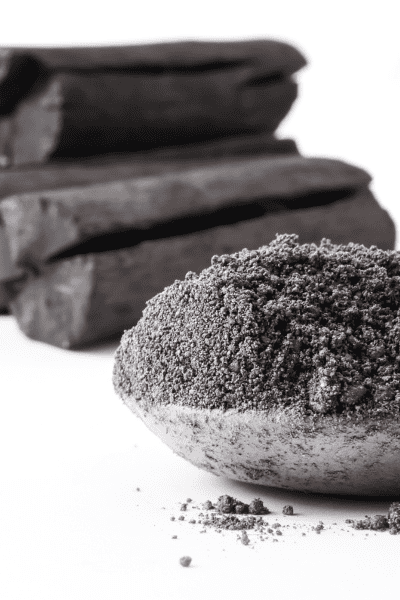
Frequently Asked Questions
If you’ve done any searching online for the best bath bomb colorants, then you’ve probably found a lot of conflicting information.
Totally confusing!
Here are some of the most common questions about bath bomb colorants, and how you can keep it clean.
How Do You Color Bath Bombs?
You can color your bath bombs in either the wet phase or in the dry phase. You’ll have to play around with it.
The easiest way is to add the bath bomb coloring during the wet phase. Do this by adding a bit of water to your natural powdered colorant, to make it equal about a half teaspoon or so. It really depends on the color you want. You can always add more water later if you need to.
You then add the now liquid colorant to the rest of your wet bath bomb ingredients, and then mix in with the dry ingredients. The color will disperse throughout the fizzy bath bomb.
Or, you can add the color to the first part of the dry ingredient phase. Simply add your powders or clay to the rest of the dry ingredients, before mixing with the liquids. I’ve had success using both methods.
Can Food Coloring be Used for Bath Bombs?
Sure can! I use all-natural food coloring in my fool proof bath bomb recipe.
I only recommend Watkins Non-Toxic Food Coloring, however.
Traditional food coloring is made from FD&C and D&C dyes, which are toxic, despite being FDA approved. These dyes are made from petroleum and benzene, and can cause asthma, hives, tumor growth, irritability, depression, ADHD…the list literally goes on and on! The research on it is insane.
It’s best to avoid traditional food coloring and go with all-natural instead. Watkins is made from turmeric, citric acid, vegetable juice, spirulina, sugar, and other natural sources.
Is it Safe to Use Mica Powder in Bath Bombs?
Well, now, there is a loaded question! Mica is a naturally shimmery mineral. Which is why people like to use mica powder in bath bombs – it makes a shimmery bath bomb.
Natural mica is either white or gold in color, ground down into a powder, and then colored with dyes.
The issue is not with the mica powder itself, but rather, with how it is colored. Because if you shop for mica powder, you will note many brilliant colors, besides the gold. These colors aren’t natural. Most mica powders are colored using the same FDA approved FD&C or D&C dyes.
But there is one more issue with its use: mica pigments can stain your bathtub, so polysorbate 80 is often added, to prevent staining.
And as we stated above, polysorbate 80 is linked to all kinds of health problems, including cancer, reproductive issues, and developmental issues. It’s like a slippery slope of needing one thing in order for another thing to work!
If you really want to use mica pigments, I recommend this Edible Luster Dust Line from Slice of Moon. I’m kind of “meh” about this product, but if you absolutely want glittery bath bombs, I’d pick this one.
The Edible Lusters are colored using the same standards that food must follow, as required by the FDA. Although these standards are by no means perfect, they are better than the regulations for coloring mica powders.
Your safest bet, however, is to use the natural bath bomb colorants I listed above and forgo the mica powder altogether.
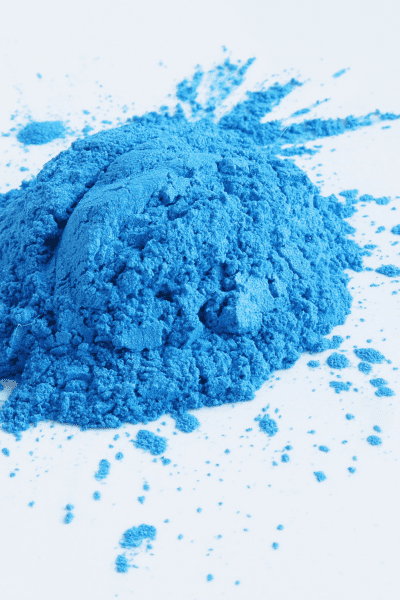
Can Liquid Colorants be Used for Bath Bombs?
Yes, liquid colorants can be used when making bath bombs if it is a water soluble liquid colorant.
As I said above, I do use natural food coloring in some bath bomb recipes. If you are going to use a liquid coloring, that’s what I’d recommend.
A lot of people gravitate more towards the liquid colorants because of the vibrant shades. But like I said before, natural colors are usually lighter in color. The vibrant colors tend to be artificially dyed.
So, if you are going to use a liquid colorant, check its ingredient list. Watch out for any lakes or dyes listed as FD&C or D&C.
Also, you may need to adjust the liquid in your bath bomb recipe. If you add too much liquid coloring, it could expand out of the bath bomb mold. This actually happened to me the first time I made bath bombs.
What Glitter is Best for Bath Bombs?
Traditional crafting glitter is not recommended for diy bath bombs. It is made from plastic, is not biodegradable, and is hard on the environment. Not to mention your drain!
Regular glitter may also contain aluminum and polyethylene terephthalate (PET), neither of which are good for you. PET causes endocrine and reproductive disruption.
Instead, use a non-plastic, eco-friendly glitter. It needs to be skin-safe and biodegradable, so that it doesn’t clog your drains or harm the environment.
Edible glitter is a great choice, too, because it will simply dissolve in the water. Sprinkle some in the bath bomb mold before putting your mixture in, to cover the outside of your bomb with glitter.
What Herbs and Dried Flowers are Best for Bath Bombs?
When looking for flowers and herbs, opt for food-grade, or edible, flowers and herbs, grown organically. These will be free from pesticides. Also, keep the pieces small because they will need to go down your drain.
You can use any flowers and herbs, but here are a few popular choices:
Lavender 💜– Often used for aromatherapy, lavender alleviates stress, anxiety, and insomnia. It also reduces headaches, nausea, and menstrual cramps.
Chamomile 🌸– Relaxes the nervous system and boosts the immune system. Chamomile also promotes healthy skin and slows the effects of aging.
Rose Petals 🌹– My personal favorite. Rose petals have natural oils that soothe and hydrate skin. They are also high in Vitamin C, which increases collagen production. Their scent is calming and de-stressing as well.
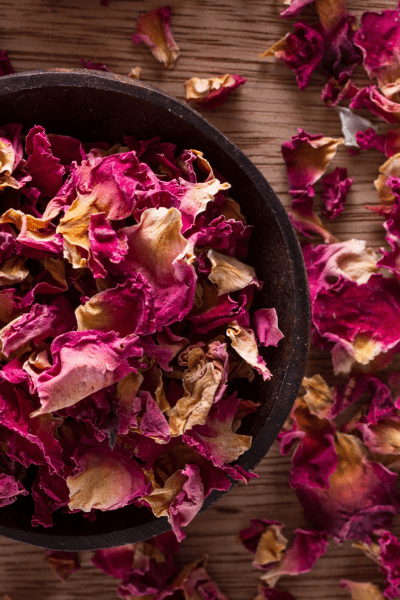
What Sprinkles are Best for Bath Bombs?
Nontoxic sprinkles are your best bet. Look at sprinkles the same way you would anything else; check the ingredient list. You don’t want to find any artificial dyes or colors in the sprinkles.
Sprinkles made from plant-based food dyes are good, as is a sugar sprinkle with natural food dye.
Final Thoughts on Bath Bomb Colorants
All in all, if you are looking for a natural way to add color to your bath bombs, give plant-based powders and clays a try!
They won’t be as bright, but with all the added skincare benefits, they will definitely be better for you! They may even feel more relaxed and luxurious.
Plus, they are easy to find and use. You can find them at your local grocery store, online, or even in your own kitchen!
Have you used natural colorants to color your bath bombs? What did you use, and how did it go? Let me know in the comments below!
Related to Bath Bomb Colorants
Easy Homemade Bath Bombs (Foolproof recipe!)
9 DIY Bath Salts to Try for Every Time of the Year!
Super Simple Bath Soak Recipe for Detox and Sore Muscles

